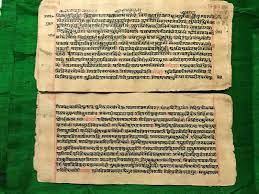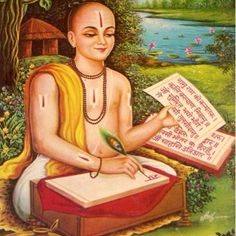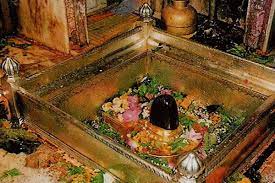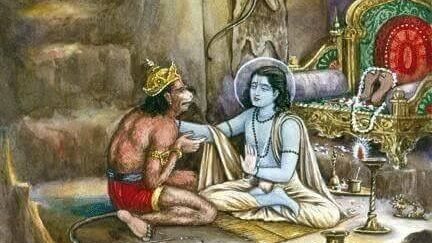
Before reading Ramcharitmanas ,it is important to know the strucuture of the text . It is divided into seven Kaand, the first three being the lengthiest.
Baal Kaand Ayodhya Kand
Aranya Kaand Kishkindha Kaand
Sundar Kaand Lanka Kaand
Uttar Kaand
Goswami Tulsidas , in the sixteenth century composed one of the greatest poem of Hindu literature in Awadhi language known as Ramcharitmanas. The epic describes the life of the legendary king of Ayodhya -Lord Rama, who is also an incarnation of Vishnu.
Being written in the vernacular language , the story of Rama became accessible to the common people and was not just limited to the highly learned class of society. The work of Tulsidas can be considered responsible for the renaissance of Hindu culture and traditions during the contemporary period.
Ramcharitmanas inspired the creation of many folk songs, streetplays called ‘Ramleela’ which continues till date. The book is acclaimed as the greatest among all devotional literature in India .
Before describing the structure and layers of composition of the text ,it is important to go through the struggles and criticism that Tulsidas had to face to make his writings popular, respectable and accepted among the people of society , as his work was in vernacular language.
Ramcharitmanas Composition
Tulsidas started composing Ramcharitmanas in Ayodhya , on Sunday , on the ninth day of bright half of Chaitra month , which is popularly celebrated as Ram Navami , birthday of Ram.
At first he composed the poem in Sanskrit , but all verses that he wrote in the day got vanished in the night . This happened continously for many days. After some days Vishwanath( Lord Shiva) , ordered Tulsidas to compose the epic in vernacular language ( in his dream as well is in the awakened state ).

It took him more than two and a half year to complete the work on the auspicious day of Vivah Panchami ( the day marks the marriage of Ram and Sita on the fifth day of bright half of Marghashirsha month).
Since he was advised by Shiva in his work, so after its completion Tulsidas went to the Kashi Vishwanath temple of Varanasi and recited the verses of Ramcharitmanas to Vishwanath and Annapurna (Parvati) .
Criticism from Priests
Tulsidas faced criticism for composing the holy Sanskrit version of Ramayana in Awadhi language . Now , tulsidas had a challenge to prove the authenticity of his work , or it would be disregarded as person interpolation of his own beliefs. Tulsidas claimed that his work was based on the ideals of Vedas and Upanishads. To prove this , the manuscripts of Ramcharitmanas were kept below other scriptures in the Garbhagriha( sanctorum ) of the temple.
The next day it was found that all all scriptures were below Ramcharitmanas , the term ‘ Satyam Shivam Sundaram’ was written on it . The voice was heard by the people there along with the priests.
Shiva himself proclaimed the authenticity of Ramcharitmanas and the text was highly accepted by the people.

In the turbulent Middle Ages, India got light from Tulsidas.The Indian society as it exists today is an edifice built by Tulsidas, and the Rama as we know today is the Rama of Tulsidas. - Mahadevi Verma ( renowned Hindi writer) in praise of Ramcharitmanas
Structure of Ramcharitmanas
Tulsidas never claims Ramcharitmanas as the retelling of Valmiki Ramayana , instead he present it as the story of Rama that was in the mind of Lord Shiva and was narrated to his wife Parvati by him
Language- Awadhi
Stanzas- 1074
Lines – 12,800 (approx)
Verses- 10,902
Parts- Seven Kaand
Metres – 18 ( 10 Sanskrit and 8 Prakrit) Chhand
| Sanskrit metres | Prakrit metres |
|---|---|
| Anushtup Shardulvikridit Vasantatilaka Vamshashtha Upajati Pramanika Malini Shragdhara Rathoddhata Bhujangaprayata | Soratha Doha( two line couplet) Chaupai(four line couplet) Harigitika Tribhangi Chaupaiya Trotaka Tomara |

| Kaand | Description |
|---|---|
| Baal Kaand Ayodhya Kand Aranya Kaand Kishkindha Kaand Sundar Kaand Lanka Kaand Uttar Kaand | Childhood episode Episode of Ayodhya Days in exile /forest Meeting Hanuman and Sugriva in Kishkindha Devotion of Hanuman War of Ramayana in Lanka Later episode ( Luv and Kush) |
Mangalacharan
Every chapter of Ramcharitmanas begins with Mangalacharan – the special invocation to particular deity, so that the work would be completed without any obstacles by the grace of the deity.
| Kaand | Mangalacharan deity |
|---|---|
| Baal Kaand Ayodhya Kand Aranya Kaand Kishkindha Kaand Sundar Kaand Lanka Kaand Uttar Kaand | Saraswati and Ganesha Shiva{praises Shankar} Shiva Ram and Lakshman Rama Rama ( praising qualities of Shiva) Rama |
Every chapter is concluded in the same way ending with a Sanskrit line:
"Iti Srimad ramacharitamanase sakala kali kalusavi dhvamsane tritiyah sopanah samaptah." -- conclusion for third chapter ( for example)
The whole text is presented as three separate conversations between
Shiva and Parvati
Sages Bharadwaj and Yajnavalkaya ( vedic sages who met Tulsidas )
Kakbhushundi( a crow whom Tulsidas is said to have met at Mansarovar) and Garud( god of birds).

Tulsidas is said to be the legend in using similies and the emperor of metaphor. Ramcharitmanas is an epitome of all his works. Readers must ask Lord Ram and Mata Janaki to grant them devotion for them before reading the epic poem.
Jai Shree Ram !